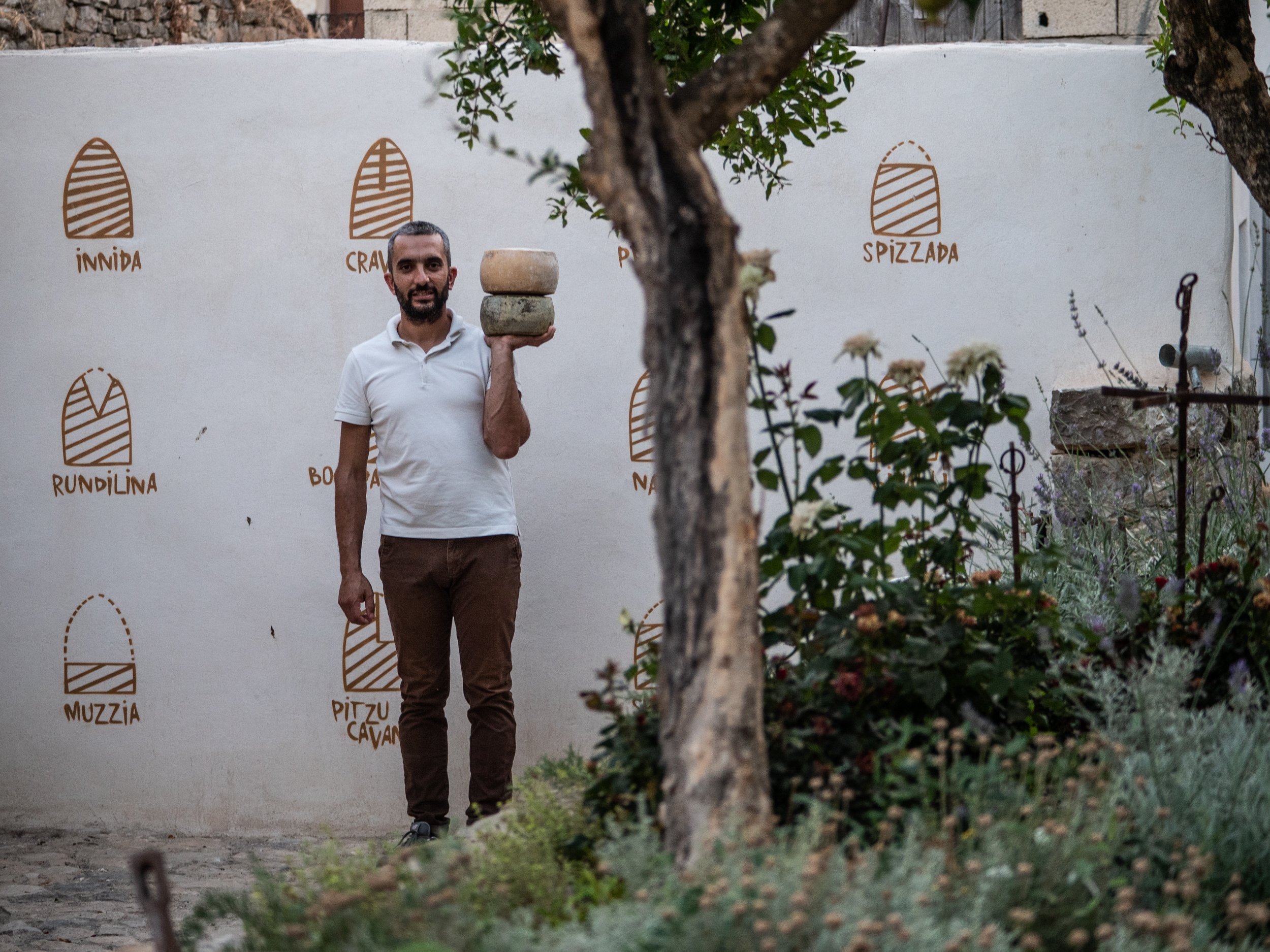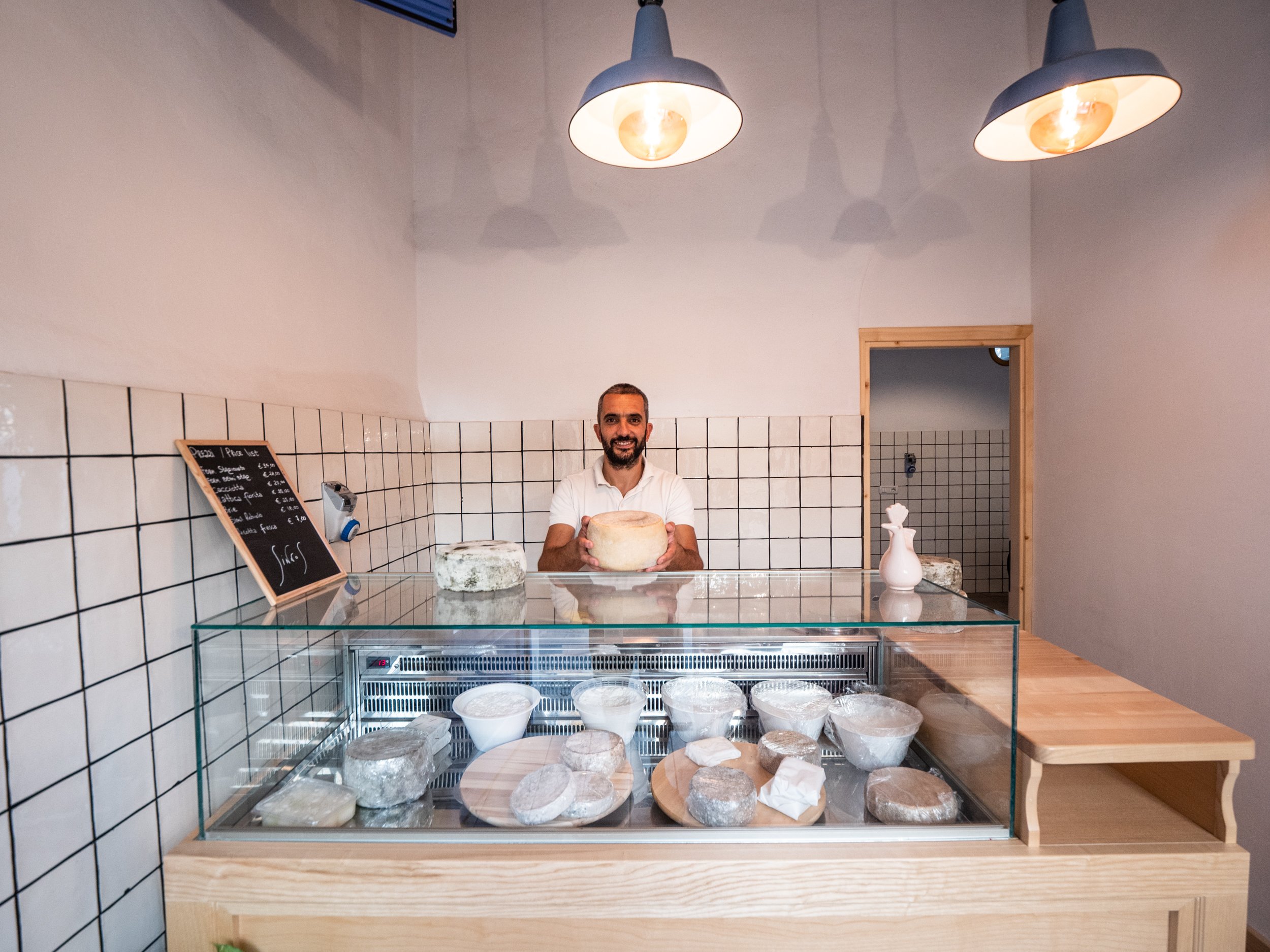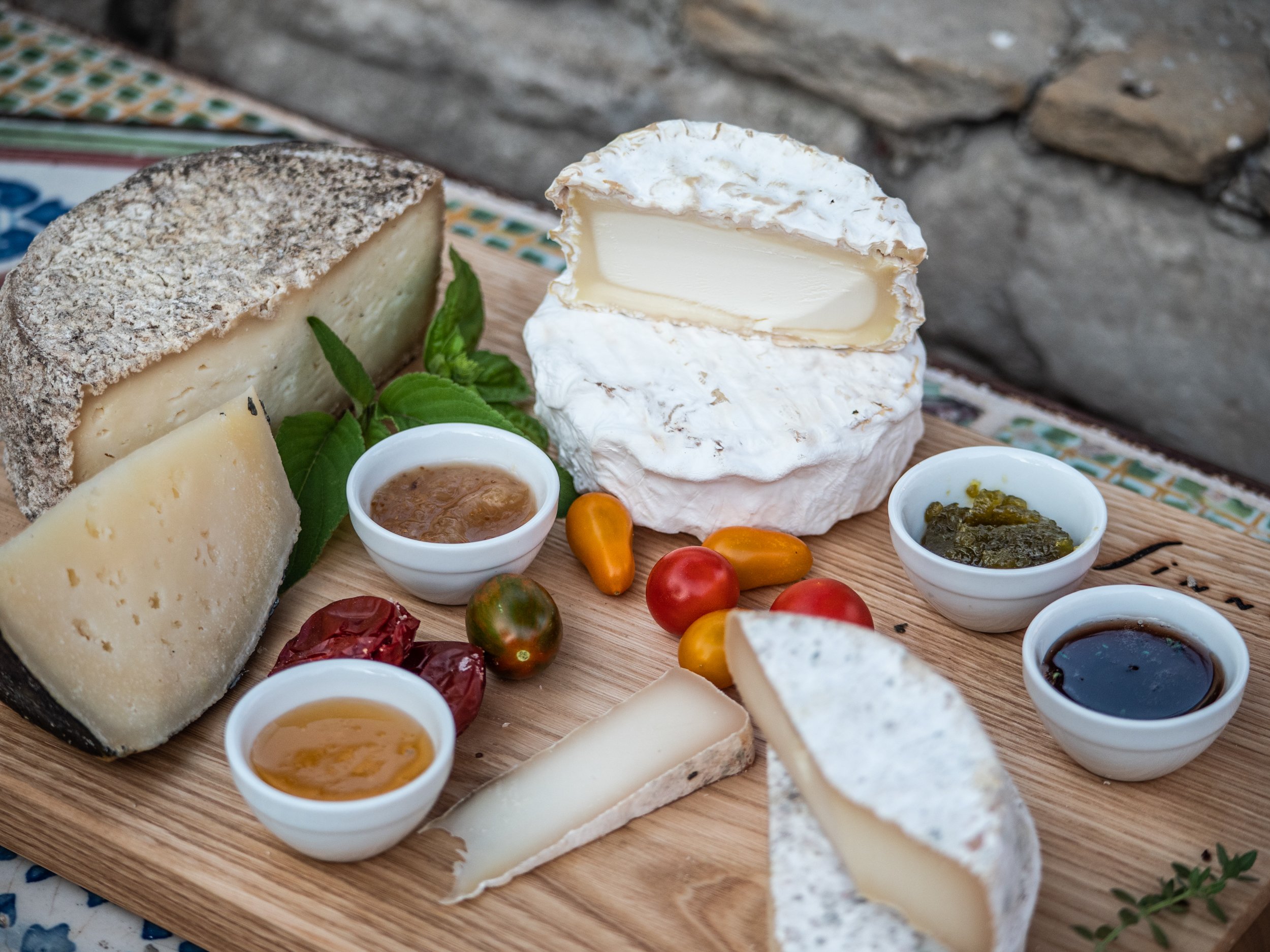How Sinnos is Creating New Sardinian Cheeses with a Nod to Heritage
Sheep in the fields photo credit Gabriele Doppiu
For most people, Sardinia – Italy’s second biggest island after Sicily – largely means wonderful sandy beaches and crystal-clear waters. Yet, the island set in the Western Mediterranean Sea mostly has a wide hilly inland, occasionally interrupted by a few peaks; here, the most frequent sight is of wheat fields, olive groves, vineyards, and flocks of sheep, which are not uncommon to meet along the inner roads.
By far the most widespread over the region, sheep farming is quintessential to the economy and culture of Sardinia, whose inhabitants have always been shepherds more than sailors and fishermen. While lamb meat is much appreciated here, the local breed – the Sarda sheep – mostly is a dairy animal, whose milk is traditionally used to make wonderful pecorino cheese such as the intense Fiore Sardo PDO. And, while over the last few years, the drastic drop in sheep milk prices caused discontent and dramatic protests from the farmers, cheese production seems a more profitable business to many, besides being an important part of local identity. This is why, a new generation of cheesemakers is emerging, be it a way to continue a family heritage…or not.
Creating Something New with Heritage
Sinnos photo credit Riccardo Locci
Samuel Lai – a former army official born in Gergei, a tiny village in Southern Sardinia – decided to devote himself to cheese making as a way to narrate and value the local agro-pastoral culture, taking forward the mission he had started a few years before setting up Domu Antiga, a lovely rural guesthouse set in a restored stone house in the center of Gergei. With the help of his family – including his mother Maria Grazia, an excellent cook who shares Sardinian food heritage with guests and courses participants – he reimagined the charm of authentic rural hospitality while adding comforts and experiences, such as pasta-making and cheese making, once common on the island.
Sinnos shop photo credit Riccardo Locci
Then, one year ago he and his wife Emanuela also launched Sinnos , their rural micro-cheese factory – a tiny shop with a well-stocked counter, a small laboratory where a copper kettle is used to make cheese from the milk of their own herd of pecore Sarde – renovating another beautiful ruined dwelling in Gergei, with an enchanting inner court where orange trees, greens, herbs, and flowers grow. They started from Emanuela’s own family heritage –a farming and cheese-making tradition and 300 animals, cared after by her mother and uncle – and from Samuel’s passion for the art of dairy, buying 60 additional Sarde sheep to fortify the existing flock.
Blue windows and doors, and stonewalls give the place a charming atmosphere, authentic and relaxed. The garden is used for tastings and meetings whenever the weather allows it, or there is a room on the side, furnished in a pleasantly rustic style, where one can taste the different cheeses served with homemade marmalades and jams or fresh fruit and listen to fascinating accounts of rural life. An underground space houses the Fiore Sardo wheels, here not smoked as usual yet massaged with the oily deposit, to slowly age pampered by hay and atmospheric conditions. A wall of the garden is decorated by intriguing signs and writings recalling something tribal and ancestral: the sinnos, or signs in the Sardinian language (which actually is a proper language, not a dialect). “These are small cuts shepherds used to make, and sometimes still do, on their sheep’s ears to recognize them and avoid theft”, Samuel explains, exemplifying his deep passion for local culture:
“In Sardinia, you are really surrounded by it, and even if your parents are not shepherds, there is always someone in the family who is.”
Respect for tradition does not mean sticking to it when making cheese. Always curious about different cheese cultures and styles, and eager to learn from expert dairymen, he experiments with processing techniques, aging, and textures well beyond the borders of the – wide and extremely interesting, yet often neglected – Sardinian cheese repertoire. Read more about the pecorino cheeses of Sardinia . And he organizes courses and cooperates with other cheese makers on the island, bound by the same passion and energy, and master cheese makers from other Italian regions and abroad.
Cheeses from Sinnos
Sinnos cheeses photo credit Riccardo Locci
Sinnos’s current range counts eight different kinds of cheese, spanning from fresh ones such as ricotta, robiola, or callau axedu – a soft and gentle curd, once made in every home or sheepfold with fresh milk, here in the brined version – to the strong mature pecorino wheels and blue cheese.
Names do come from local tradition, though. Saccaja – meaning a young sheep, under one year – is a soft cheese, like brie, with a flowery crust and evident proteolysis. Manixu – from the habit to take animals to the pasture – is a squared, small-shaped cheese with a bold taste and semi-soft texture, similar to Taleggio, where washing the crust with water and salt allows a special bacteria (Brevi Bacterium Linens) to grow, enhancing the milk’s flavor and the under crust cream. Muvroni – the wild sheep male, or muflon – is their flagship product: the wheels are dried and matured in modern and hygienic plastic molds, yet wrapped with linen cloths, to recreate the conditions of a natural material. Aged from 4 to 18 months and regularly washed with vinegar, this hard cheese has a dark crust and an intense taste. “What I love the most”, Samuel says, “Is that every time we taste the cheeses they are always different, even though the product is the same! Yet, you can taste and smell a stunning aromatic variety, sensing the change of season and pastures”




